Top 10 Great Monuments Of Ancient Egypt
Ancient Egypt is one of the greatest and oldest civilizations in the world. They were also better known for their incredible monumental architecture. Many of them represent the concept of after life exist in Ancient Egypt. The art and architecture developed by the ancient Egyptian civilizations also influenced different cultures around the world. Followings are list of 10 great ancient Egyptian monuments.
10Valley of the Kings
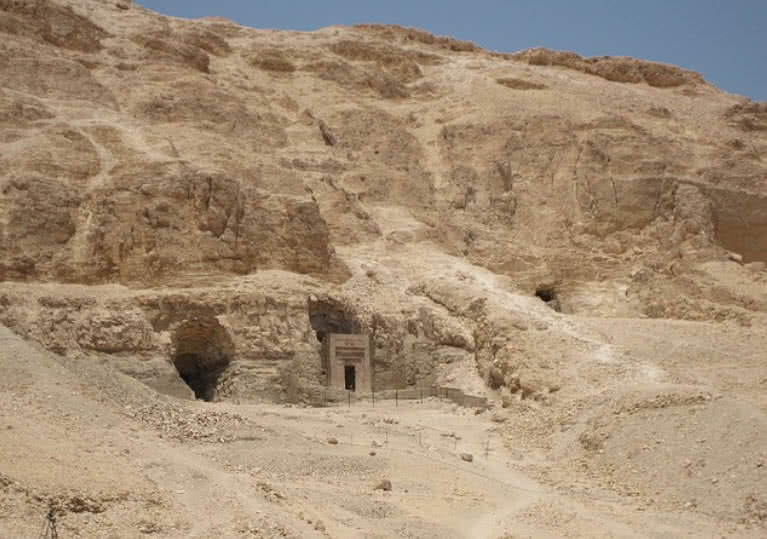
The valley of Kings in the West bank of Nile was the principal burial place of pharaohs of New Kingdom of ancient Egypt (1539 B.C – 1075 B.C). The valley contains some 60 tombs and chambers. The site also used as burial place of queens, priests and other notable people of ancient Egypt. Mummification was used for preserving royal bodies at that time. It was excavation process between 2005 and 2008 helped the archaeologist to discover most of the tombs and chambers. Today it is one of the most important archaeological site in the world. UNESCO also listed valley of Kings as a world heritage site in 1979.
The underground tombs of pharaohs also contains with materials like cloths, wines, furnitures and jewelries. The royal tombs also stocked with many sacred objects. Ancient Egyptians believed that such objects would help the dead bodies to achieve eternal life. The tombs discovered in the site were built using limestones and sedimentary rocks. The decoration within the royal tombs of valley of Kings also depict ancient Egyptian mythology.
9Temple of Hatshepsut
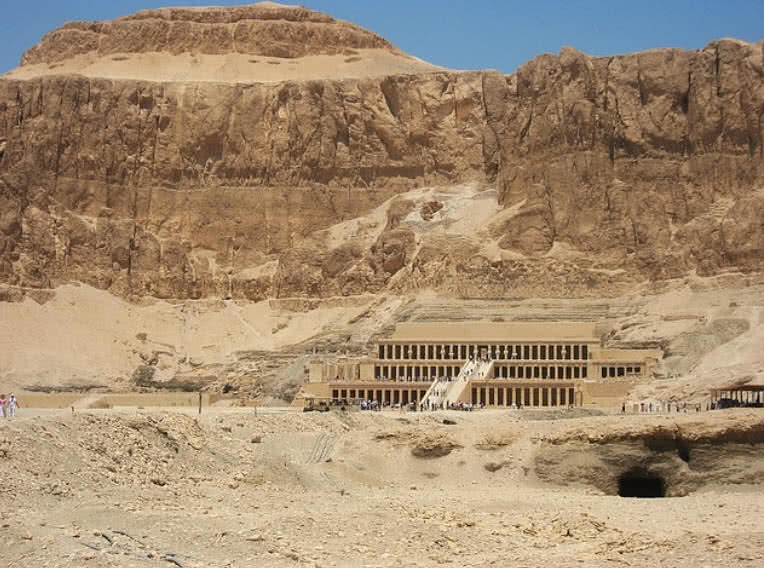
Temple of Hatshepsut also known as Deir el-Bahr temple located opposite to Luxor city, near valey of Kings. The ancient Egyptian word ‘Deir el-Bahr’ meas ‘Monastery of North’. The temple was dedicated for Amun, The local deity of ancient Egyptian city Thebes. The temple was built by pharaoh Maatkare Hatshepsut in 15th century B.C. The construction of the temple was highly influenced by the architectural style of earlier Deir el-Bahri temple in the bank of Nile.
It was built on three terraced levels. There is also a 100 foot causeway leading to top of the temple, to a height of 30 meters. The walls of the temple also illustrate the important life events of female pharaoh, Maatkare Hatshepsut. The relief sculpture within center terrace of the temple represent the divine birth of Hatshepsut. The punt colonnade, long sequence of columns in the temple also depict pharaoh’s journey for finding out myrrh trees for decorating her temple.
8Medinet Habu
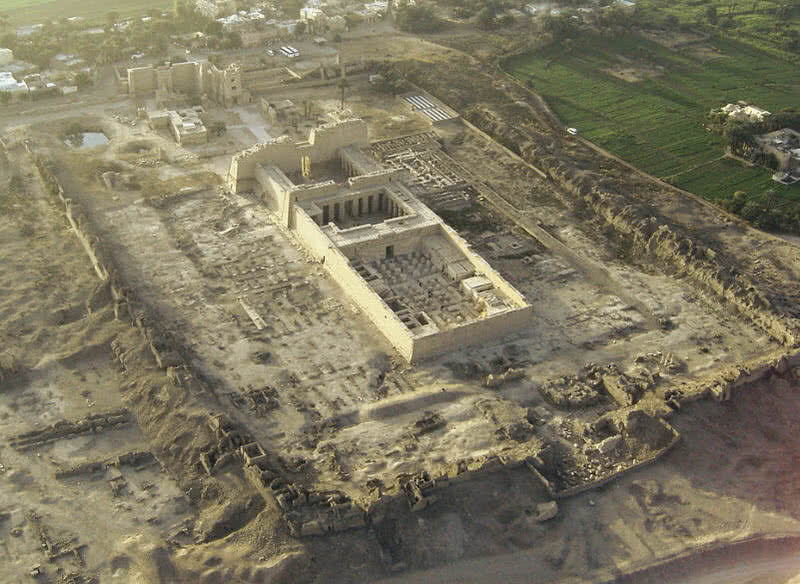
7Medinet habu also known as Mortuary temple of Ramses III, a huge temple complex located in Luxor of Egypt. The temple was built by 3500 years ago to honor the memory of great Ramsses III pharaoh. The entire complex is surrounded by partially destroyed ancient wall. The outer wall of the temple were decorated with battle reliefs of Ramses III pharaoh. There is also funerary chamber of Ramses III kept inside one of hall of the temple. Many valuable jewelries, cloths and other goods are also kept inside his chamber.
Pyramid of Djoser
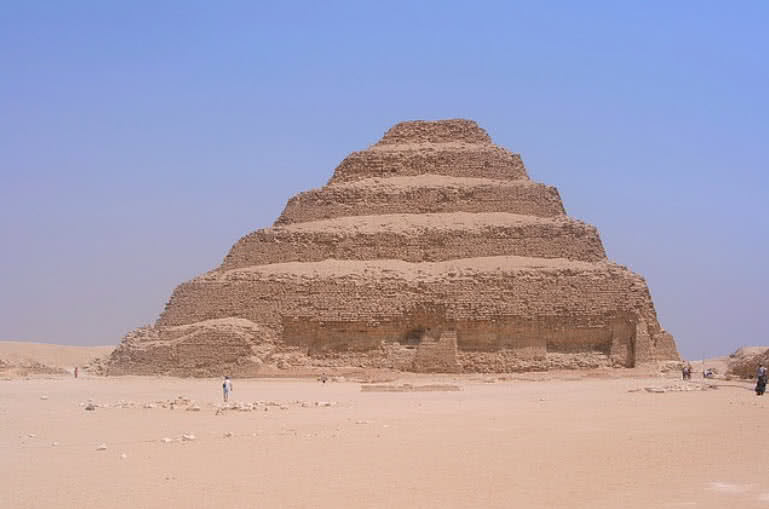
Pyramid of Djoser is the first ever pyramid built by Egyptians. The pyramid was built for pharaoh Djoser in 27th century B.C. The step pyramid standing to a height of 60 meters and consist of six layer. It have a flat roof structure and sloping sides. There were 11.6 cubic million of stones and clay employed for the construction of pyramid of Djoser. The pyramid was the largest stone cut structure of it’s time. It is actually situated in a large complex that encompasses 35 acres of land, contains temples, chapels and number of other monuments. It is also considered as monumental symbol of crown.
There is also tunneled chambers and galleries that have total length of 6 kilometers. The burial place for pharaoh and other members of royal family also located between the tunnels. The burial rooms were also stocked with jewelries and other goods.
6Luxor Temple
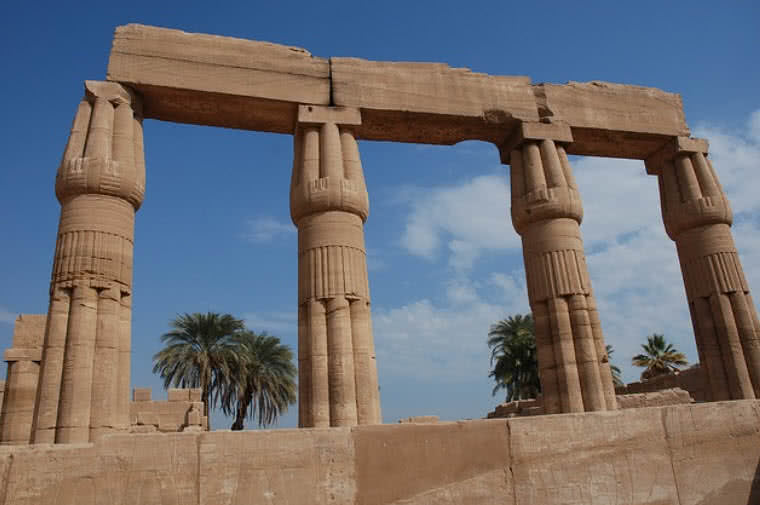
Luxor temple a great ancient Egyptian temple complex that contains six temples in total. The temples were dedicated to Amun, Mut and Khonsu, deities of ancient Egyptian city Thebes. The site is also known for one of most important religious festival in ancient Egypt known as opet festival. The statues of important deities Thebes, Amun, Mut and Khonsu were sailed to Nile river at it’s time.
The temple was constructed in 14th century B.C using sandstones. The complex remained into disrepair for a long time. In 320 B.C the temple was reconstructed by Alexander the Great. There are many open areas within the temple complex. They were used for different kind of worship during new kingdom period, between 1539 B.C and 1075 B.C. The massive pylon towers at Luxon temple were recorded with scenes of militarily triumphs by different pharaohs. The six colossal statues of ancient Egyptian prince Ramesses at the main entrance is the another notable attraction in the site. There are also wall painting that represent the divine birth of pharaohs.
5Karnak Temple
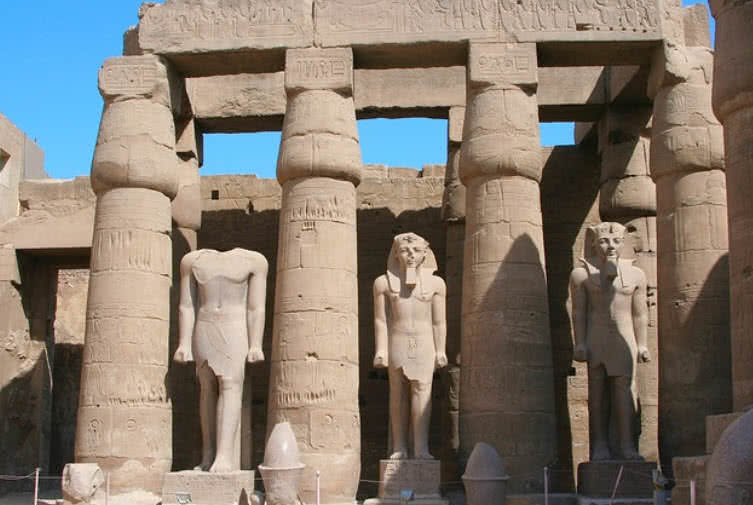
Karnak is a large ancient temple complex situated in the bank of Nile. The site covers a vast area of 100 hectares. It was originally known as ‘Ipet-isut’ meaninf ‘most sacred places’. It is the second largest temple complex in the world. Karnak complex contain three main temples, number of outer temples, chapels and other monuments. The main temples of karnak complex was dedicated for Amun, the God of ancient Egyptian city Thebes, Goddess Mut and God Montu.
The construction of karnak temple complex started by 4000 years ago and continued for next thirteen hundred years. More than thirteen pharaohs were worked for karnak complex. The temples in the site also represent different types of worship existed in the history ancient Egyptian culture.
Precinct of Amun-Re is the most notable section of karnak temple complex. It is dedicated for Amun, the God of ancient Egyptian city of Thebes. It contains tall columns, tons weighing tapering monuments and several colossal statues. Sandstones are mainly used for the construction of Amun-Re temple. The second main temple located at the Southern part of the complex dedicated for Goddess Mut. There is also a crescent shaped sacred lake located near the temple. Another notable temple is located at the Northern part of the complex which is dedicated for war God Montu. It is smaller than that of other two important temples.
4Colossi of Memnon
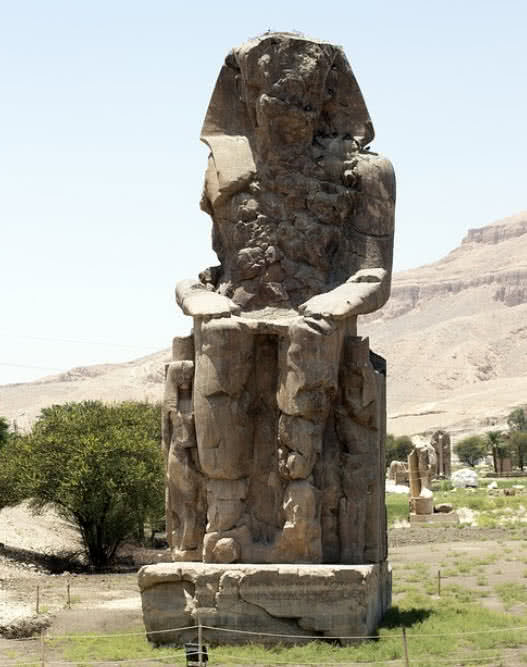
Colossi of memnon is two gigantic statues that depict Amenhotep III pharaoh. The statues were built in 1350 B.C as guards for mortuary temple. The statues were carved out from quartzite sandstone. Both statures are in seated position of pharaoh with hands on knee and gazing towards the river. They standing to a height of 75 feet and have a weight of 750 tons. Both men and nature caused several damages to both statues. But both statues are still impressive and attracts thousands of tourists every year.
3Abu Simbel Temples
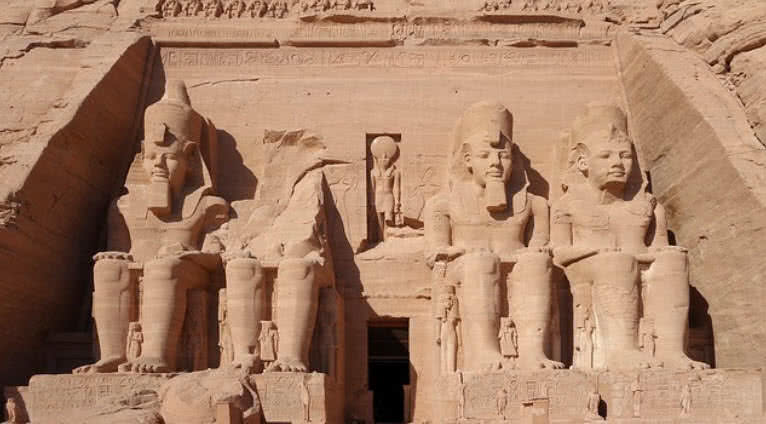
Abu simbel contains two massive rock temples located in West bank of Nile. The temples were constructed by pharaoh Ramasses II between 1264 B.C and 1244 B.C, were carved out in mountainside. Abu simbel was dedicated to Sun Gods Amon-Re and Re-Horakhte. There are four 69 foot tall colossal statues of Ramasses II located at the entrance. After long time the temple abandoned because of it’s remote location. It was rediscovered back in 1813 by Swiss orientalist Jean Louis Burckhadt.
Abu simbel temples contain series of rock cutting halls and rooms. The halls contain Osirid statues of pharaoh Ramasses. The halls are also connected to inner chambers of the temple. On every 22nd February and 22nd October the Sun rays will illuminate the back wall of innermost statues of four Sun Gods. It is the most outstanding feature of abu simbel temples.
2The Great Sphinx Of Giza

Great sphinx of Giza is the largest monolith statue in the world located in the West bank of Nile in Giza. It is a large limestone statue of mythical creature with lion’s body and human head. It is 73.5 meter in length and 66.34 meters in height. Great sphinx is also the oldest known monument in the world. Archaeologists estimated that the monument was built between 2558 B.C and 2532 B.C. The natural erosion and man activity over time caused many damage to face of the monument. The purpose of the great sphinx still remains as a mystery.
The great sphinx got buried in sand after the abandonment of Giza Necropolis. The first excavation process at the site dated back to 1388 B.C. Several excavation process were also performed by archaeologists throughout the centuries. The entire monument was finally excavated between 1925 and 1936. After the excavation archaeologist found that the one meter nose is missing from the sphinx. There is also a rumor that the nose of sphinx was broken by Napoleon’s army.
1Great Pyramid of Giza
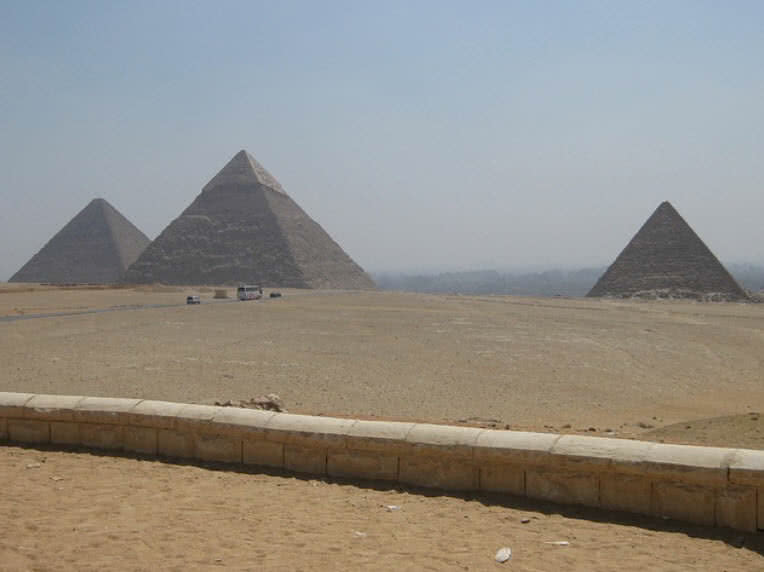
Great pyramid of Giza is one of seven wonders of ancient world situated in Giza Necropolis of Egypt. It is also the oldest and largest one of all three pyramids built for pharaohs Khufu, Khafre and Mnkaure in Giza complex. The pyramid of Giza was built between 2589 B.C and 2504 B.C. More than 2.3 million stone blocks were used for it’s construction. It have a height of 481 feet and it remained as tallest manmade monument in the world for long 3800 years.
The mortar used for the construction of Giza pyramid stronger than that of stones. Archaeologists believed that that kind of mortar can’t be reproduce nowadays. Pyramid of Giza contains three chambers, first one is located at underground it is carved into bed rock. The chambers of both queen and king situated above ground. The king’s chamber was decorated with granite and it’s roof made of nine enormous slabs that weights more than 400 tons in total. There is also a 8 meter high and 47 meter long grand gallery that leads to king’s chamber.
ليست هناك تعليقات:
إرسال تعليق